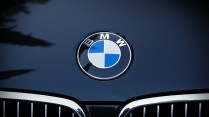Toyota Develops Groundbreaking Engine That Captures Carbon Out of the Air
By Dabbie Davis
Feb 27, 2024 08:59 PM EST

Toyota is making strides in environmental innovation with the development of a carbon capture technology integrated into the hydrogen-powered GR Corolla, which made its debut at a notable endurance race in Japan last summer.
Toyota's Engine: Captures Carbon Out of the Air
Toyota's successful testing of this air filter system on the hydrogen engine of the GR Corolla prototype marks a significant step forward in their commitment to sustainable engineering. This initiative reflects Toyota's dedication to advancing eco-friendly solutions, even as the mainstream implementation of such technology remains a work in progress.
CarBuzz cited a report by Automotive News, this pioneering filtering device is designed to extract greenhouse gases from the air during vehicle operation.
Toyota's Rookie Racing motorsports team unveiled this groundbreaking technology in the hydrogen-powered hot hatch, marking a significant milestone for the automotive industry. Additionally, Toyota's foray into carbon-cleaning engine technology through motorsport testing signifies an early-stage development that requires further refinement and scaling before widespread implementation.
As reported, impressively, the system has demonstrated an average capture of one gram of carbon per lap, showcasing its potential impact on emissions reduction in high-performance settings.
The innovative carbon capture technology comprises dual circular filters positioned at the front of the engine bay and the inlet of the air cleaner, capable of drawing in an impressive 60 liters of air per second.
These advanced filters, constructed with a ceramic catalyst coated in a carbon dioxide absorbent engineered by Kawasaki Heavy Industries, effectively capture carbon dioxide from the surrounding air. The trapped carbon dioxide is subsequently absorbed by a fluid receptacle, serving as a storage solution for the captured emissions from the filters.
READ MORE: Breaking News: 2025 Subaru Forester EV Development Promises Exceptional Range
Next in Line: Toyota Prius, Tacoma
According to a report by Motor1.com, the widespread integration of this technology into vehicles like the Prius or Tacoma is not imminent. The carbon collection capacity of the filter is currently insufficient to offset the emissions of an average gasoline engine, and the need for frequent replacement presents a logistical challenge.
The limited carbon dioxide filtration performance of the race car, amounting to approximately 20 grams over 20 laps, underscores the current limitations of the technology. To provide context, a gasoline-powered vehicle can emit nearly 8,900 grams of CO2 per gallon of fuel consumed.
Notably, Toyota diverged from industry norms recently with chairman Akio Toyoda's announcement of a "major engine development project," in contrast to the predominant focus on battery-electric vehicles among its competitors. The company's cautious approach to widespread electric vehicle adoption aligns with its forecast of slower market penetration and a more comprehensive strategy for achieving carbon neutrality.
Ongoing Development
According to reports from EVs InsideEVs Global, the unique feature of the filters is their ability to operate without requiring power, utilizing waste heat from the engine to dissolve the captured carbon. This characteristic makes them adaptable for installation in various vehicles equipped with internal combustion engines, although the feasibility of integrating the system into electric cars remains uncertain.
However, the technology currently faces significant constraints. At present, it can only capture approximately 20 grams of carbon dioxide over 20 laps at the Fuji Speedway, despite its impressive air intake rate of 60 liters per second. In comparison, a single gallon of gasoline generates around 8,887 grams of CO2, as outlined by the EPA. While hydrogen combustion yields cleaner emissions, the necessity of replacing the filters at each pit stop presents a practical challenges.
It shared that Toyota Times has highlighted the team's efforts to enhance the carbon capture capacity and automate the filter replacement process. It's anticipated that vehicles capable of accommodating larger filters will exhibit improved carbon capture capabilities. However, the potential complexity and costliness of implementing automated filter replacement pose additional considerations for Toyota as they pursue these advancements.
RELATED ARTICLE: The Crown Demonstrates Toyota's Ability to Create Attractive Vehicles: Automotive Columnist Declared
Copyright @ MOTORTIMES, All rights reserved. Do not reproduce without permission.








